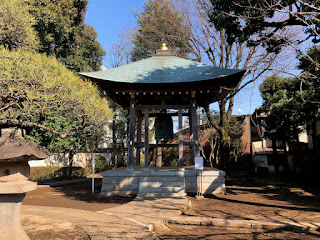-- Susan, every other Sunday
As I've mentioned before, for centuries the ume (Japanese plum) blossoms have been viewed as harbingers of spring--a welcome sight after the long and often brutal Japanese winter.
This week, I walked to En'yū-ji, a Tendai Buddhist temple three minutes from my home in Meguro's Himonya neighborhood. The temple is home to the oldest wooden building in Tokyo (more on that in a minute) as well as a lovely grove of ume trees.
 |
| The entrance to En'yu-ji |
En'yū-ji was founded in 853; the ume that line the entry walk and dot the grounds are not that old, though their position in Japanese history is even more timeless.
 |
| Ume (Japanese plum) trees at the entrance to En'yu-ji |
I go to En'yū-ji every spring to see the ume, but this year, I visited with a heavy heart. Frankly, it felt unfair that I could walk in peace beneath the blooming trees while across the sea people fought--and died--in Ukraine to preserve the right to live, and work, in freedom I so often take for granted.
 |
| The Amidado - a post-war addition to En'yu-ji |
 |
| The temple bell |
 |
| The Shakado |
I also believe in the sovereign right of persons--and nations--to live in peace, and without fear. And so, I prayed for the people of Ukraine, and for an end to war--both there and elsewhere.
 |
| Ume blossoms at En'yū-ji |
When I finished praying, I walked among the ume, thinking of the many years in which their colorful petals opened, and fell, on wars, and famines, and people being terrible to one another.
And I thought of all the years they opened on times of peace, when poets and artists could sit beneath their branches, look at the blossoms, and be grateful for the times in which they lived.
I wish I could end this post with a good report about Ukraine - but as I go to sleep tonight, the fight continues.
 |
| Ume at En'yū-ji |
 |
| Ume at En'yū-ji |
So instead, I will leave you with an ancient Japanese poem, composed by an unknown hand, that appears in the Man'yōshū--a 9th-century compilation of classical Japanese poetry:
梅の花散らす春雨いたく降る旅にや君が廬りせるらむ
The plum blossoms
Are scattered by spring rains
--a savage fall.
On your travels, my darling
What hut provides your shelter?
Are scattered by spring rains
--a savage fall.
On your travels, my darling
What hut provides your shelter?
















Beautifully put, Susan. We all join you in this hope and prayer.
ReplyDeleteI'm all with you and Michael on your prayers, Susan. May all our prayers be heard for the people of Ukraine and the world.
ReplyDeleteThank you Susan and all for hoping and praying for peace.
ReplyDeleteThank you, Susan.
ReplyDeleteThank you so much, Susan, for this beautiful post. How I wish I could be there to pray with you again at the temples and enjoy the peace we found together.
ReplyDelete